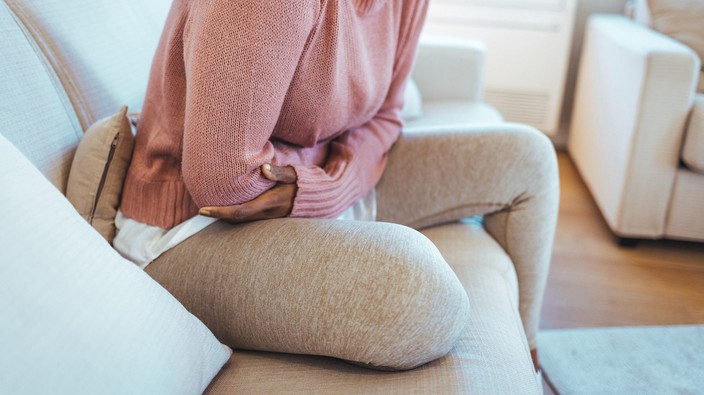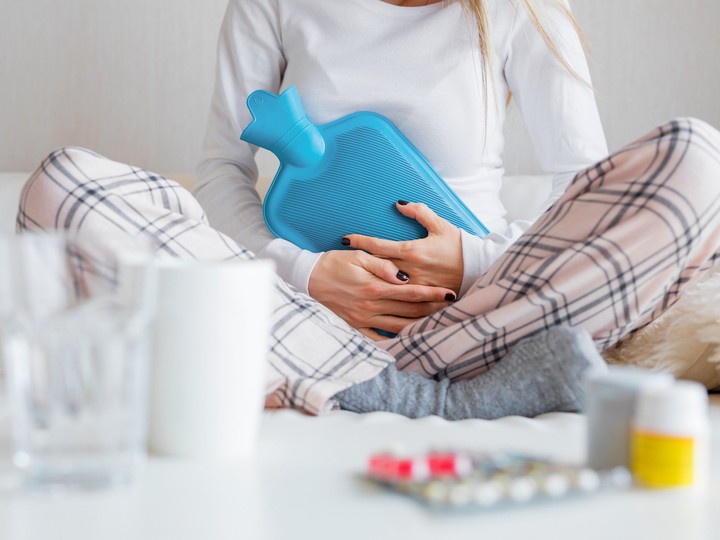advice: are period cramps affecting your life?
there are a lot of reasons why menstrual cramps can be debilitating, from genetics to underlying health conditions.

gynecological conditions, like endometriosis, can cause more severe or widespread cramping. getty
dear asking for a friend,
i’ve heard that tonic water is good for cramps. would it work for menstrual cramps?
signed,
grumpy and uncomfortable
grumpy and uncomfortable
dear grumpy and uncomfortable,
no question, menstrual cramps can be painful. some people feel them more than others, but it’s entirely common because of your body’s physiology, according to the cleveland clinic. pain typically starts a couple days before your start menstruating or when the bleeding begins, and you usually feel it in your lower abdomen, thighs or back (or all three). you can also experience fatigue, nausea and diarrhea.
why the cramping? your uterus is like a huge muscle that gets a heavy-duty workout during your period. it contracts to help get rid of the lining that your body doesn’t need. hormone-like chemicals called prostaglandins trigger the uterine muscle to contract, and high levels of these chemicals tend to bring on more severe period cramps. and if you have a blood clot or a lot of menstrual blood, your uterus may cramp to expel that as well.
“the lining of the uterus builds up throughout our menstrual cycle as our hormones cycle throughout the average 28-day cycle,” says dr. nikita patel, a family physician at women’s college hospital in toronto, and lecturer and clinical teacher of medicine at the university of toronto.
advertisement
“right before we have our period, our body’s getting ready to ditch this endometrial lining because we didn’t get pregnant that cycle. we don’t need it to implant an egg,” she explains. “those prostaglandins cause the uterus to contract, which is not unlike the contractions we get with delivery, but they’re not as significant or severe and they don’t build in the same way.”
patel says that while people experience menstrual cramps very differently, there can be other conditions or lifestyle factors that make your cramps worse. genetics can also play a role, so if you have a mother or sister with severe menstrual cramps, you might already be headed in that direction.
endometriosis can make cramps worse
gynecological conditions, like endometriosis, can cause more severe or widespread cramping. this is where the lining that usually is just on the inner surface of the uterus forms a similar lining that extends into the fallopian tubes or the pelvic area.
“then anywhere that lining is starts to cramp when the prostaglandins get released,” patel says, adding that fibroids can also prompt the uterus to boost contractions. “fibroids are non-cancerous muscle growths in the uterus wall, sometimes hanging in the uterus. and when they’re inside the body of the uterus, the body’s thinking, ‘ok, i need to shed the endometrial lining and everything that’s in this uterine cavity.’ sometimes it’s trying to push out a fibroid, but the fibroid is not going anywhere. and so those women can sometimes get heavier cramping or bleeding.”
advertisement
other conditions to be aware of include adenomyosis, where the endometrial tissue begins to grow into the muscular walls of the uterus, as well as pelvic inflammatory disease caused by sexually transmitted bacteria that infects your reproductive organs. much more rare is cervical stenosis that happens when the cervix opening is small enough to restrict menstrual flow and you end up with a painful increase of pressure within your uterus.
but if your cramps are severe and interfering with your daily life, see a health-care provider. don’t just curl up in the fetal position and suffer.
patel explains there are lifestyle factors that you might not be aware of that can make you more susceptible to painful cramping, like smoking, having a lot of caffeine or alcohol, or high salt in your diet, so making an effort to reduce these can help relieve symptoms.

heat can distract from the pain of menstrual cramps as well as reduce its severity. getty
“it’s interesting because menstrual cramps are affected by similar things as hot flashes,” she says. “so caffeine worsens hot flashes and alcohol worsens hot flashes. it’s not like our body necessarily sets us up for success.”
the good news is that period cramps that are not caused by another condition usually lessen as you age and can improve after having a baby.
advertisement
as for the possible use of tonic water, it contains quinine which at one point was commonly prescribed for restless leg syndrome and leg cramps to relax the muscles, but it’s no longer recommended. as well, they are different muscles, patel says. there are skeletal muscles in your arms and legs, for example, and smooth muscle that make up organs like the uterus.
when she counsels her patients, the approach is more about what steps they can take overall and what to do in the moment with bad pain. for pain in the moment, she recommends over-the-counter pain medication taken with food to protect your stomach, and heat, whether it’s a hot water bottle or hot bath.
“heat is great for not only distracting our mind from the pain because you feel the heat, you don’t feel the pain,” she says. “but the menstrual cramps actually respond really well to heat and reduce in terms of their severity.”
she also suggests learning about acupressure points for self-care during menstruation and the transcutaneous electrical nerve stimulation (tens) devices that you attach to your skin on the lower abdomen that change pain signalling so you’re not feeling the intensity of your menstrual cramps.
lifestyle changes can also make a difference. patel suggests regular exercise, dietary supplements like vitamin e and b complex, managing stress, and improving hydration.
advertisement
karen hawthorne is a toronto-based writer.
thank you for your support. if you liked this story, please send it to a friend. every share counts.
 4 minute read
4 minute read





